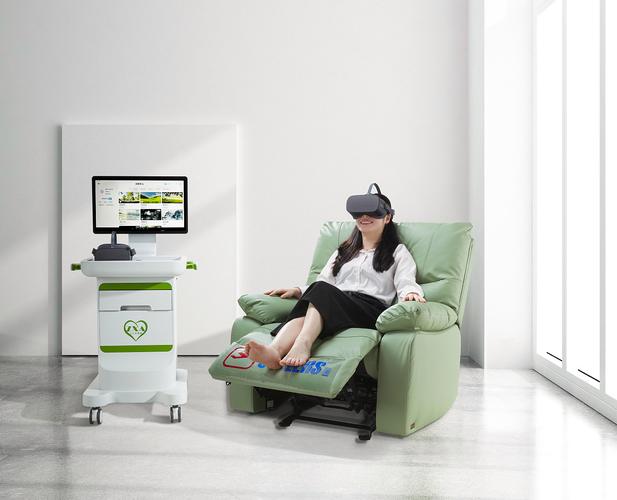In the field of mental health treatment, the application of virtual reality (VR) technology is opening up a new treatment mode. This immersive technology simulates the real environment to help patients face and deal with psychological issues in a safe virtual space. This article will explore the application of virtual reality technology in mental health treatment, the benefits it brings, and the challenges it faces.
The Application of Virtual Reality Technology in Psychotherapy
Treating post-traumatic stress disorder (PTSD)
The application of virtual reality technology in the treatment of post-traumatic stress disorder (PTSD) has made significant progress. Through VR, patients can return to the scene that caused psychological trauma, but this time they can face their past fears in a safe and controlled way with the guidance and support of a psychologist. This’ exposure therapy ‘has been proven to be an effective method for treating PTSD.
Treating anxiety and panic disorder
For patients with anxiety and panic disorder, virtual reality can be used to simulate situations that may trigger anxiety, such as public speaking, high-altitude scenes, etc. In a virtual environment, patients can gradually adapt to these situations, learn relaxation and coping skills, thereby reducing anxiety in real life.
Assisted cognitive-behavioral therapy
Virtual reality technology can assist cognitive-behavioral therapy (CBT) to help patients identify and change negative thinking patterns. In a virtual environment, patients can more intuitively see how their thoughts and behaviors affect their feelings, and with the help of therapists, practice new patterns of thinking and behavior.
Social skills training
For individuals with social anxiety or autism, virtual reality provides an ideal environment to practice social skills. In a virtual environment, patients can safely practice interacting with others without being limited by the real world, thereby improving their social skills and confidence.
The benefits brought by virtual reality
Provide a safe treatment environment
Virtual reality provides patients with a safe and controllable environment, allowing them to face and deal with psychological issues without being limited by the consequences of the real world.
Increase the acceptability of treatment
For some patients who feel uncomfortable or fearful in traditional treatment settings, virtual reality provides a more attractive treatment option. This novel treatment approach helps attract more patients to actively participate in the treatment.
Improve the efficiency of treatment
Virtual reality can simulate various situations, which means therapists do not need to search for or create these conditions in the real world. In addition, VR therapy can be repeated without worrying about real-world variables, which helps improve treatment efficiency.
Personalized treatment plan
Virtual reality technology allows therapists to customize personalized treatment plans for each patient. Therapists can design virtual environments with different levels of difficulty and contexts based on the specific situation of patients to meet their individual needs.
Challenges Faced
Although the application prospects of virtual reality in mental health treatment are broad, there are also some challenges. Firstly, there is a cost issue as the development cost of virtual reality devices and software is relatively high, which may limit their widespread use in therapy. Next is the acceptance of technology, as some patients and therapists may hold a conservative attitude towards new technologies. In addition, the physical discomfort that VR may cause, such as dizziness and nausea, also needs to be taken into account during the treatment process.
Future development direction
With the continuous advancement of technology and the reduction of costs, it is expected that the application of virtual reality in mental health treatment will become increasingly widespread. Future VR therapy will be more personalized and intelligent, capable of automatically adjusting treatment plans based on patients’ reactions. Meanwhile, as research deepens, we will gain a better understanding of the mechanism of VR in psychotherapy and develop more effective treatment programs.
epilogue
The application of virtual reality technology in mental health treatment provides patients with a new treatment approach, and with its unique advantages, it is gradually changing the face of the field of psychotherapy. Despite certain challenges, with the continuous development and deepening of technology, VR is expected to become an important auxiliary tool in mental health treatment.


















































Discussion about this post